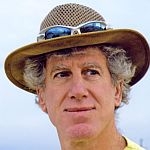 (HOST) The star of many a festive table throughout the holidays is the Turkey, inspiring commentator Ted Levin to do a little reading-up on the truth about turkeys.
(HOST) The star of many a festive table throughout the holidays is the Turkey, inspiring commentator Ted Levin to do a little reading-up on the truth about turkeys.
(LEVIN) The Aztec first domesticated the turkey, a local race called Gould’s turkey, largest and southern-most of five subspecies of wild turkey, Meleagris gallopavo. The Spanish brought the turkey to Europe in 1519; it reached England in 1524. Henry VIII was the first English king to eat turkey. Then, Edward VII made it fashionable for Christmas dinner. In 1969, Neil Armstrong and Buzz Aldrin ate turkey sandwiches on the moon.
Benjamin Franklin declared his admiration for the wild turkey in a letter to his daughter written in 1782. "I wish," wrote Franklin, "the bald eagle had not been chosen as the representative of our country. He is a bird of bad moral character. For truth, the turkey is in comparison a much more respectable bird, and withal a true original native of America . . . He is besides, though a little vain and silly, a bird of courage . . ."
Ben Franklin should see what’s become of the bird since then.
In the intervening years, the wild turkey nearly disappeared, while the domestic turkey has grown fatter, weaker, slower, and dumber. Over-breeding to satisfy our craving for white meat has left domestic turkeys so pathetically buxom they can no longer make little turkeys without assistance. Domestic turkeys attempting to mate look like two footballs: their legs are too small, their chests too large.
Selective breeding left the domestic turkey flightless and witless. But while they may be a bubble off plumb with the IQ of wood chips, it’s a myth that they often drown by looking up in a rainstorm. In fact, a turkey can’t look up at anything; it eyes are on the side of its head and it lacks binocular vision. Still, the bird can’t be too bright for such an unflattering rumor to catch on. Darwin chose pigeon breeds to demonstrate the analogy between artificial selection and natural selection. He might have had fun if he had illustrated his point with the domestic turkey.
However, as Franklin suggested, the wild turkey is classic: handsome, wary, and full of himself.
The bird’s historic range included the eastern half of the United States west to Arizona and south to the halls of Montezuma. Turkeys have also been introduced into several western states, southern Canada, Hawaii, Germany, and New Zealand.
By the middle of the 19th century they were extirpated from New England. Then, in 1969 and 1970, 31 wild turkeys from western New York were released in Vermont. Originally native only to the state’s four southern counties, wild turkeys are virtually everywhere today – with a statewide population approaching 50,000. Recently, I saw a flock stripping fruit from a crabapple. As I approached, they flew out of the tree, glided across a highway, landed in a pasture, and rushed into the woods, ambulatory, unlike the bird browning in my oven.